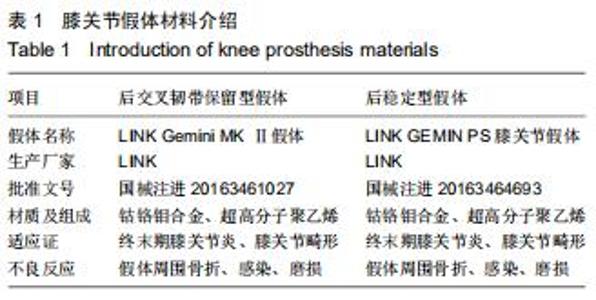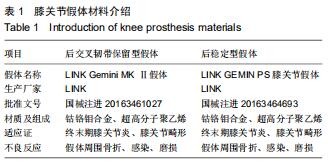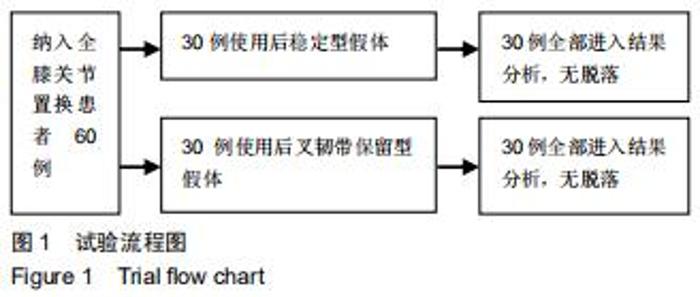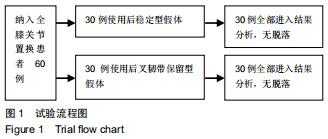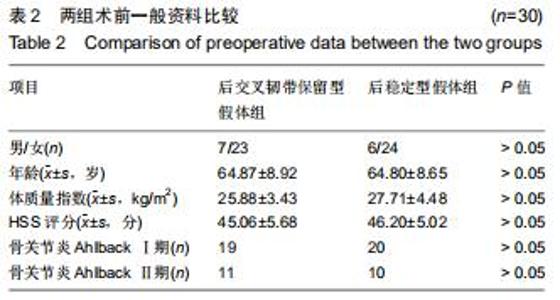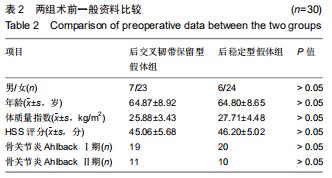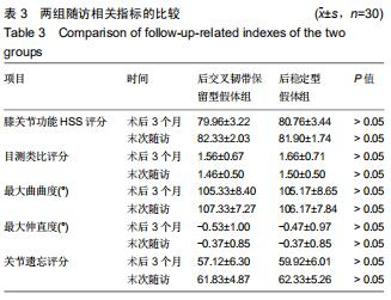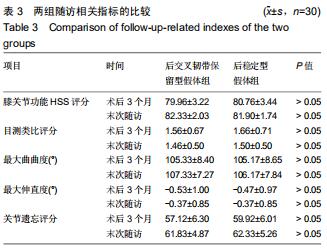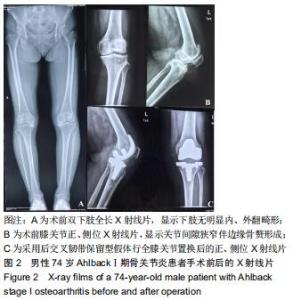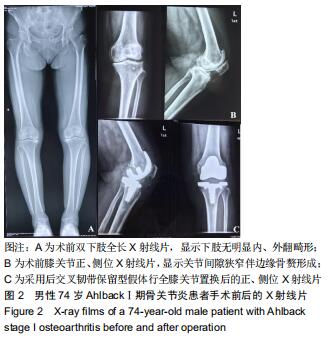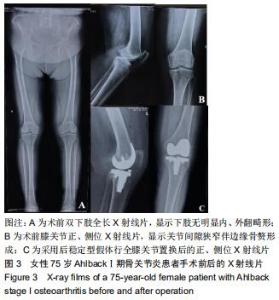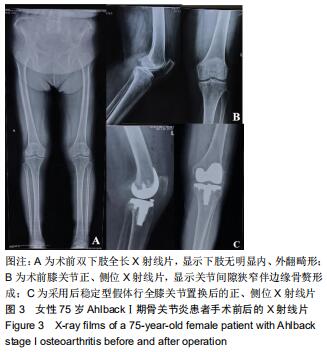|
[1] ASSIOTIS A, TO K, MORGAN-JONES R, et al. Patellar complications following total knee arthroplasty: a review of the current literature.Eur J Orthop Surg Traumatol. 2019;29(8): 1605-1615.
[2] MIGLIORINI F, ESCHWEILER J, TINGART M, et al. Posterior-stabilized versus cruciate-retained implants for total knee arthroplasty: a meta-analysis of clinical trials.Eur J Orthop Surg Traumatol.2019;29(4):937-946.
[3] BECKER R, DÖRING C, DENECKE A, et al. Expectation, satisfaction and clinical outcome of patients after total knee arthroplasty.Knee Surg Sports Traumatol Arthrosc 2011;19:1433.
[4] BEHREND H, GIESINGER K, GIESINGER JM, et al. The “forgotten joint” as the ultimate goal in joint arthroplasty: validation of a new patient-reported outcome measure. J Arthroplasty.2012;27(3):430.
[5] SUDA AJ, SEEGER JB, BITSCH RG, et al. Are patients’ expectations of hip and knee arthroplasty fulfilled? A prospective study of 130 patients.Orthopedics.2010;33:76.
[6] THIENPONT E, OPSOMER G, KONINCKX A, et al. Joint awareness in different types of knee arthroplasty evaluated with the Forgotten Joint score.J Arthroplasty. 2014;29(1):48-51.
[7] LARSSON A, ROLFSON O, KÄRRHOLM J. Evaluation of Forgotten Joint Score in total hip arthroplasty with Oxford hip sccore as reference standard.Acta Orthop. 2019;90(3):253-257.
[8] KIM MS, KOH IJ, CHOI YJ, et al. Differences in Patient-Reported Outcomes Between Unicompartmental and Total Knee Arthroplasties: A Propensity Score-Matched Analysis. J Arthroplasty. 2017;32(5):1453-1459.
[9] SONG SJ, PARK CH, BAE DK. What to Know for Selecting Cruciate-Retaining or Posterior-Stabilized Total Knee Arthroplasty. Clin Orthop Surg.2019;11(2):142-150.
[10] SACHINIS NP. Posterior cruciate ligament retaining versus posterior cruciate ligament substituting knee arthroplasties: a four-decades-old debate.Hard Tissue.2013;2(3):28.
[11] PANDIT H, WARD T, HOLLINGHURST D, et al. Influence of surface geometry and the cam-post mechanism on the kinematics of total knee replacement.J Bone Joint Surg Br.2005;87-B:940-945.
[12] MISRA AN, HUSSAIN MRA, NEWTON G. The role of the posterior cruciate ligament in total knee replacement.J Bone Joint Surg Br. 2003;85-B:389-392.
[13] RITTER MA, DAVIS KE, MEDIVIG JB, et al. The role of the posterior cruciate ligament in total knee replacement.Bone Joint Res. 2012;1(4):64-70.
[14] URISH KL, CONDITT M, ROCHE M, et al. Robotic Total Knee Arthroplasty: Surgical Assistant for a Customized Normal Kinematic Knee.Orthopedics.2016;39(5):e822-827.
[15] VERRA WC, BOOM LG, JACOBS WC, et al. Similar outcome after retention or sacrifice of the posterior cruciate ligament in total knee arthroplasty. Acta Orthop.2015;86(2):195-201.
[16] THIPPANNA RK, MAHESH P, KUMAR MN. PCL-retaining versus PCL-substituting TKR - Outcome assessment based on the "forgotten joint score".J Clin Orthop Trauma.2015;6(4):236-239.
[17] BEHREND H, ZDRAVKOVIC V, GIESINGER J, et al. Factors Predicting the Forgotten Joint Score After Total Knee Arthroplasty. J Arthroplasty.2016;31(9):1927-1932.
[18] PEERSMAN G, VERHAEGEN J, FAVIER B. The forgotten joint score in total and unicompartmental knee arthroplasty: a prospective cohort study.Int Orthop.2019;43(12):2739-2745.
[19] BEHREND H, ZDRAVKOVIC V, BÖSCH M, et al. No difference in joint awareness after TKA: a matched-pair analysis of a classic implant and its evolutional design.Knee Surg Sports Traumatol Arthrosc.2019;27(7):2124-2129.
[20] HIYAMA Y, WADA O, NAKAKITA S, et al. Joint awareness after total knee arthroplasty is affected by pain and quadriceps strength.Orthop Traumatol Surg Res.2016;102(4):435-439.
[21] THIENPONT E, ZORMAN D. Higher forgotten joint score for fixed bearing than for Mobile-bearing total knee arthroplasty.Knee Surg Sports Traumatol Arthrosc.2015:1e5.
[22] HA CW, PARK YB, SONG YS, et al. Increased range of motion is important for functional outcome and satisfaction after total knee arthroplasty in Asian patients. J Arthroplasty.2016;31(6):1199.
[23] CAO S, LIU N, HAN W, et al. Simplified Chinese version of the Forgotten Joint Score (FJS) for patients who underwent joint arthroplasty: cross-cultural adaptation and validation.J Orthop Surg Res.2017;12(1):6.
[24] BARRACK RL, RUH EL, CHEN J, et al. Impact of socioeconomic factors on outcome of total knee arthroplasty.Clin Orthop Relat Res.2014;472(1):86.
[25] BRANDER V,GONDEK S,MARTIN E,et al.Pain and depression influence outcome 5 years after knee replacement surgery.Clin Orthop Relat Res.2007;464:21.
[26] CULLITON SE, BRYANT DM, OVEREND TJ, et al. The relationship between expectations and satisfaction in patients undergoing primary total knee arthroplasty.J Arthroplasty.2012;27(3):490.
[27] STONE AH, MACDONALD JH, KING PJ. The Effect of Psychiatric Diagnosis and Psychotropic Medication on Outcomes Following Total Hip and Total Knee Arthroplasty.J Arthroplasty. 2019;34(9): 1918-1919.
|
